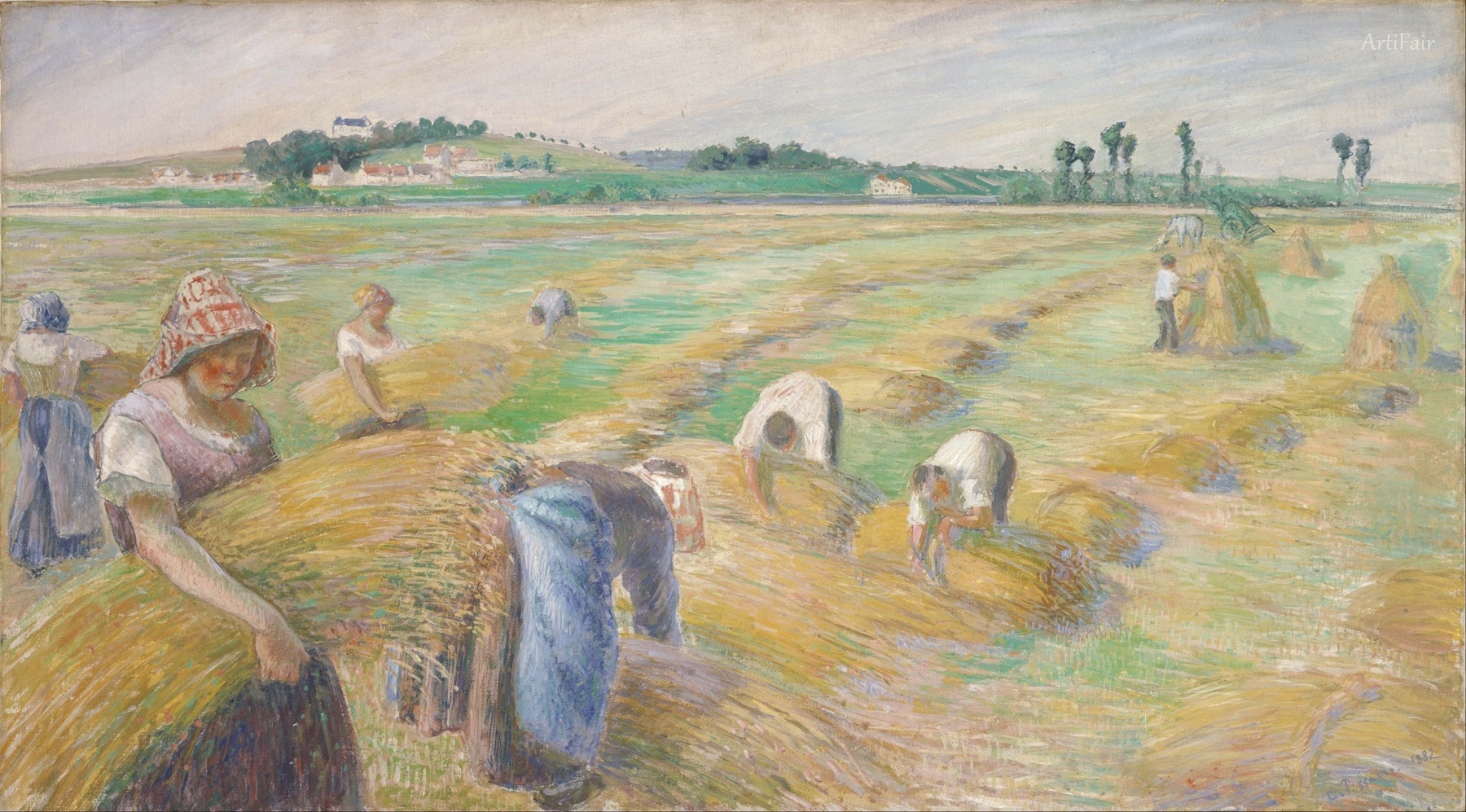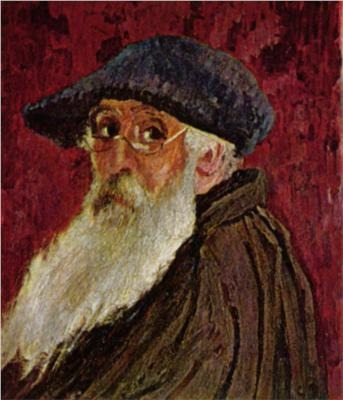

Camille Pissarro
FR
362
Artworks
1830 - 1903
Lifespan
Artist Biography
Jacob Abraham Camille Pissarro, born on July 10, 1830, on the island of St. Thomas in the Danish West Indies (now the US Virgin Islands), was a pivotal figure in both Impressionism and Neo-Impressionism. His father, of Portuguese Jewish descent with French nationality, and his mother, from a French-Jewish family, ran a mercantile business. This mixed heritage and upbringing on a Caribbean island provided a unique backdrop to his early life. At twelve, Pissarro was sent to boarding school in Passy, France, where he developed an appreciation for art and was encouraged to draw from nature. Returning to St. Thomas, he worked in his father's business but dedicated his spare time to sketching. His encounter with Danish artist Fritz Melbye around 1850 solidified his artistic ambitions, leading him to leave his family and accompany Melbye to Venezuela for two years, diligently documenting landscapes and local life.
In 1855, Pissarro moved to Paris to pursue art seriously. He studied at the École des Beaux-Arts and Académie Suisse, but found their traditional methods stifling. He sought guidance from Jean-Baptiste-Camille Corot, whose emphasis on painting outdoors (en plein air) and capturing natural light profoundly influenced him. Pissarro also admired the realism of Gustave Courbet and Jean-François Millet. During his studies, he befriended younger artists like Claude Monet, Paul Cézanne, and Armand Guillaumin, who shared his dissatisfaction with the academic art establishment and the rigid Paris Salon. His early paintings, initially aligned with Salon expectations, gradually shifted as he embraced painting rural scenes and everyday life directly from nature, developing a more personal and truthful style.
Pissarro became a central figure in the burgeoning Impressionist movement. In 1873, he was instrumental in establishing the "Société Anonyme des Artistes, Peintres, Sculpteurs et Graveurs," a cooperative that organized independent exhibitions. He was the only artist to exhibit in all eight Paris Impressionist exhibitions, from 1874 to 1886, showcasing his unwavering commitment to the group. Known for his wisdom, kindness, and balanced personality, he was often referred to as the "dean of the Impressionist painters" and acted as a mentor and father figure to many, including Cézanne, who called him "a father for me," and Paul Gauguin. His work focused on landscapes and rural scenes, often depicting peasants and ordinary people in natural settings, rendered with broken brushwork and a bright palette to capture the fleeting effects of light and atmosphere.
The Franco-Prussian War (1870-71) forced Pissarro, a Danish citizen, to flee to London with his family. There, he met art dealer Paul Durand-Ruel, who became a crucial supporter, and reconnected with Monet. Exposure to the works of British landscape painters like Turner and Constable reinforced their commitment to plein air painting. Upon returning to France, Pissarro discovered that soldiers had destroyed most of the 1,500 paintings he had left behind—a devastating loss of his early Impressionist development. Undeterred, he resettled in Pontoise and later Louveciennes, continuing to paint the French countryside. He also became fascinated with Japanese prints, which influenced his compositions. His marriage to Julie Vellay in 1871 produced seven children, six of whom became painters, reflecting the artistic environment he cultivated.
In the mid-1880s, at the age of 54, Pissarro embraced Neo-Impressionism (Pointillism), influenced by Georges Seurat and Paul Signac. For several years, he experimented with this scientific approach of applying small dots of color to create optical mixtures, demonstrating his continuous desire for artistic renewal. Though this phase was relatively short-lived, as he found it too restrictive for capturing his "sensations," it highlighted his open-mindedness. In his later career, Pissarro produced significant series of urban landscapes, notably views of Paris (Boulevard Montmartre, Gare Saint-Lazare), Rouen, and Le Havre, often painted from hotel windows due to a recurring eye infection. These works captured the dynamism of city life with the same sensitivity to light and atmosphere that characterized his rural scenes.
Camille Pissarro died in Paris on November 13, 1903. His legacy extends beyond his impressive body of work, which includes paintings, drawings, and prints. He played an unparalleled role in fostering the Impressionist and Post-Impressionist movements, not just through his art but through his unwavering support, guidance, and encouragement of fellow artists. His commitment to artistic independence, his exploration of various styles, and his focus on portraying the "common man" and natural truth were revolutionary. Pissarro's strong anarchist beliefs also informed his empathetic depiction of rural labor and his critique of social inequities. He remains a highly respected figure, celebrated for his artistic integrity, his profound humanity, and his enduring influence on the course of modern art.